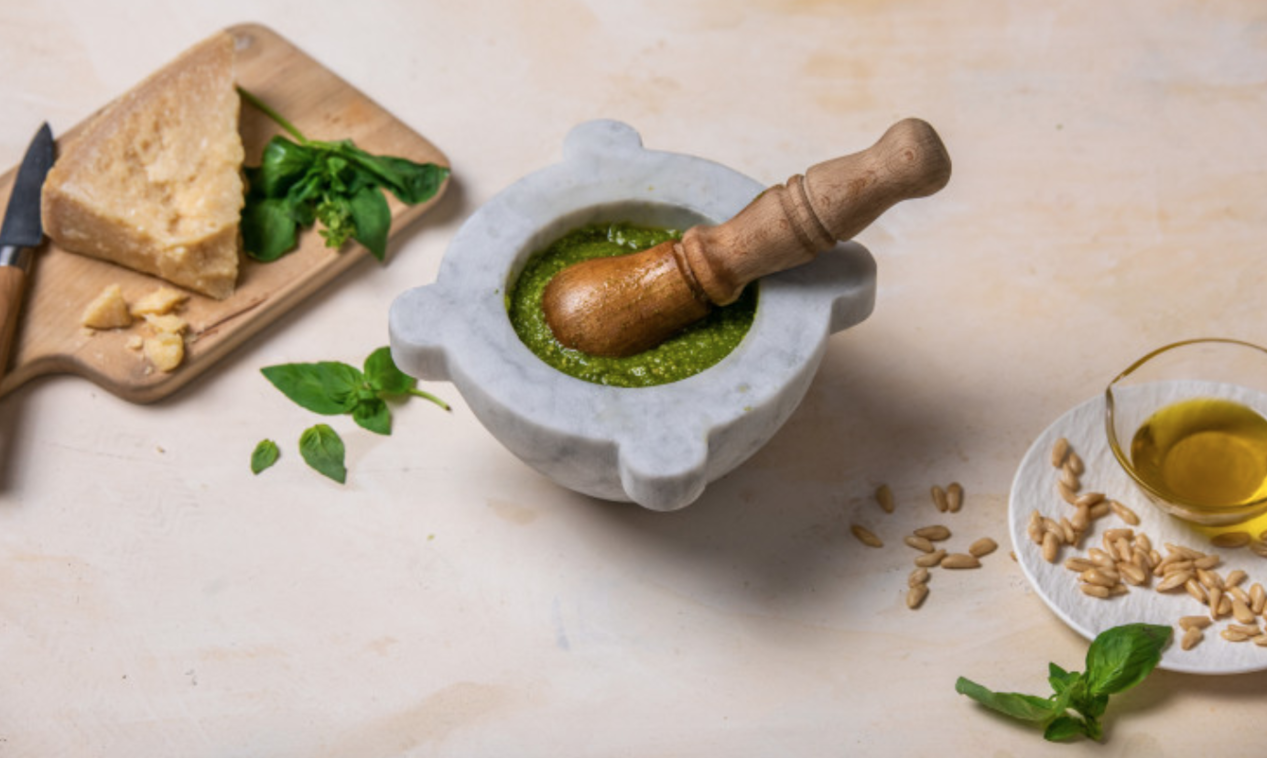Five Secrets to Making Better Pesto
So what's the key to a fresh pesto that tastes like you're dining on the Italian Riviera? With some basic tools and fresh Italian ingredients, these tips will take your pesto from pretty good to absolutely italiano.
The classic pesto alla genovese contains just seven ingredients and a few basic steps. When combined properly – the word pesto itself comes from the Italian verb pestare, or "to grind" – you get a silky sauce that balances the delicate flavors of Ligurian extra virgin olive oil, the floral notes of Basilico Genovese DOP, the intense saltiness of Pecorino and Parmigiano Reggiano DOP, and the creaminess of Italian pine nuts.
Ready to get your grind on? Here are five secrets to making better pesto.
1. Use a mortar and pestle.
One thing is certain when you talk to pesto purists: a mortar and pestle is essential. This technique protects the flavors of the basil leaves. The metal blade in food processors and blenders can cause the basil to oxidize faster and lose some of its aromatic properties. The pestle also breaks the leaves down into different sizes, rather than the uniform pieces from the food processor, which gives the pesto extra texture.
2. Crush the ingredients using a downward and circular motion.
Make sure you always move the pestle in the same direction. Changing directions halfway through can cause the basil to oxidize faster.
3. Follow the order of the ingredients!
The order in which you add the ingredients to the mortar is crucial since each one takes a different amount of time to fully break down, and this key to achieving the final, creamy texture.
4. Keep it fresh.
To fully savor its bright flavors, enjoy pesto right after it has been made. The basil will begin to oxidize quickly! If you are making it ahead of time or have leftovers, spoon into a jar, cover the pesto with a drizzle of olive oil which will help preserve it, and screw on a tight fitting lid. Keep the jar in the fridge and use within 2 to 3 days.
5. Never cook the pesto.
Heat will make the basil turn brown and oxidize! Drain the pasta first, reserving a bit of the cooking water. In large bowl or pot, add the pesto and mix together with the pasta. If it seems dry, add a little bit of the reserved cooking water until all the pasta has been fully coated.


































i-Italy
Facebook
Google+
This work may not be reproduced, in whole or in part, without prior written permission.
Questo lavoro non può essere riprodotto, in tutto o in parte, senza permesso scritto.